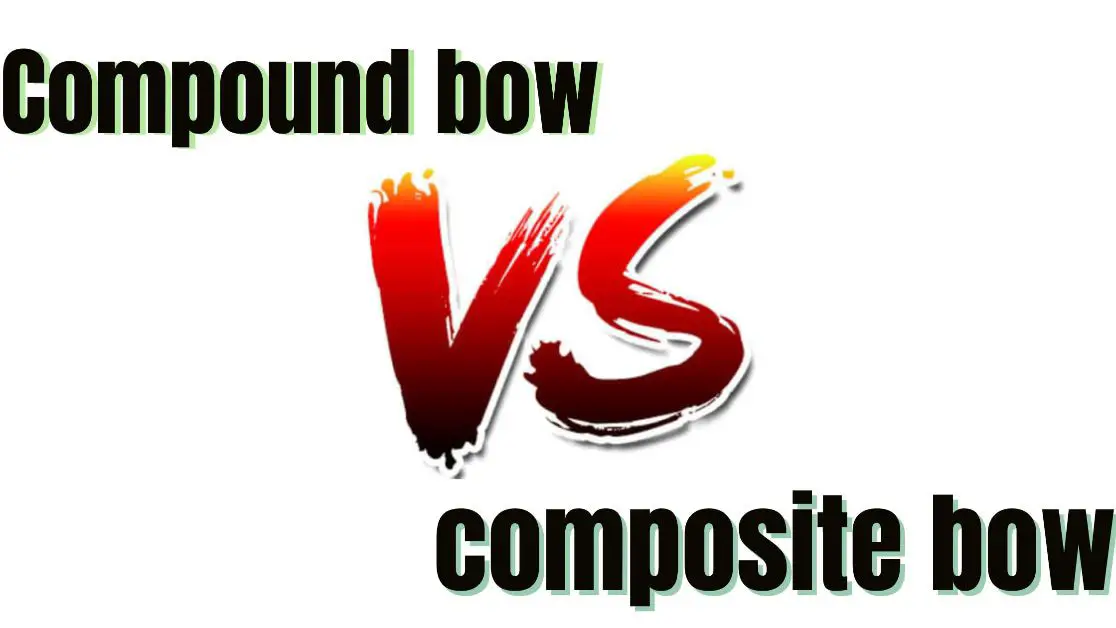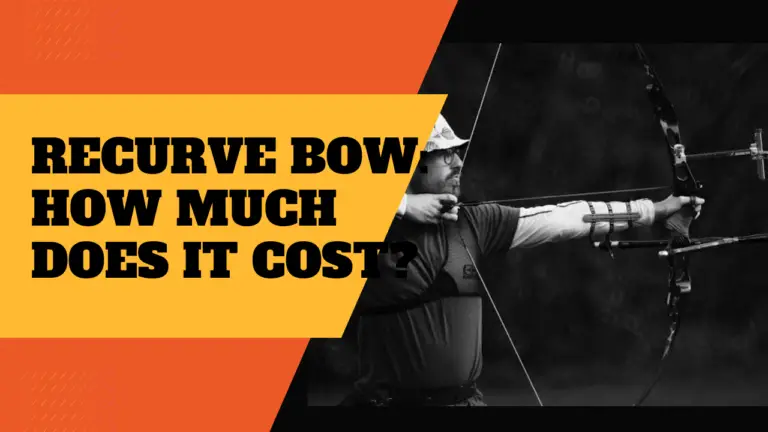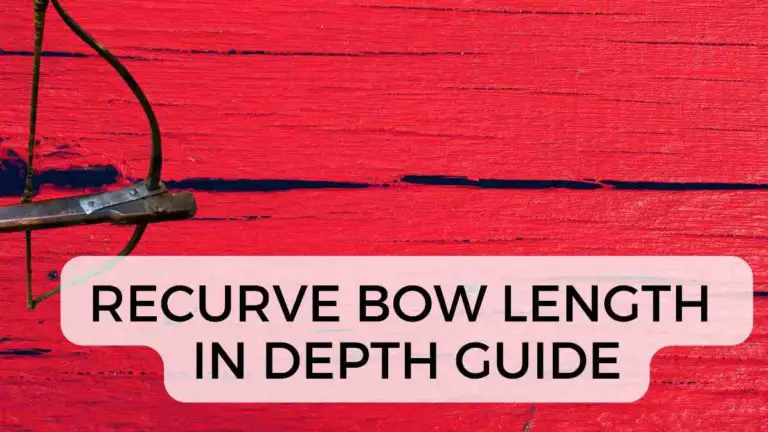Compound Bow Vs Composite Bow – Which is better?
Choosing between compound and composite bows can be challenging, especially if you’re trying to decide which one to use on your next hunting trip. The compound bow is much faster and more modern than a composite bow. These two types of protuberances are the top choices of archers, whether they’re used in competition or just out in the field. This article will explain a comprehensive comparison between these two awesome bows.
Compound bow vs Composite bow: Which one is better?
The question of which one to choose comes from personal preference and what you want from your bow. Both styles have advantages and disadvantages, so let’s look at how they differ before deciding which one you should use when hunting deer or elk this season.
The Compound Bow and Its Key Features
The compound bow revolutionized the world of archery and bow hunting in the late 1970s and early 1980s when it was first introduced to hunters. While some still use recurve bows, many prefer the compound bow’s ease of use and ability to deliver high performance at an affordable price. A compound bow comprises five significant parts that work together to give the user the highest amount of energy from the draw to release, resulting in longer shooting distances and higher arrow speeds than other bows. These five parts are the cam system, limbs, riser, grip and cables.
Following are some key features of this bow.
Specifications List
Let’s take a look at the specs of a compound bow.
- Weight of bow: 4.5 lbs
- Available in 10 different types
- Length of Brace: 7 inches
- Draw weight: 40-70 lbs
- Draw length: 26-31 inches
- Speed of IBO: 335 FPS
Safety
The compound bow is an archery bow that uses a system of pulleys and cables to compress the limbs, making it more energy-efficient and accessible to draw than a traditional recurve bow. This design also increases safety by preventing the string from snapping back and injuring the archer. The bow has no sharp edges so that it can be handled safely.
Ease of use
One of the great things about compound bows is that they are relatively easy to use, even for beginners. The cables and pulleys in the machine make it easier to pull back on a drawstring than a longbow or recurve bow. The pulleys also allow for smoother movement with less effort when shooting arrows at your target.
Shorter Axle-to-Axle length
One of the critical features of a compound bow is its shorter axle-to-axle length. This makes it more maneuverable than a traditional bow, which can be a significant advantage in tight situations. The shorter length also makes the bow lighter and easier to carry, which is ideal for hunters who have to walk long distances. Additionally, the shorter axle-to-axle length provides a steadier aim, making it easier to hit your target.
Smooth draw cycle
One of the things that makes a compound bow so unique is its smooth draw cycle. This is thanks to the let-off feature, which allows you to hold less weight at full draw. Unlike recurve bows, there are no stacking issues with a compound bow as they tend to release more smoothly. The let-off point can be anywhere from 10% – 90%.
The Composite Bow: Key Features
The composite bow, also known as the recurve bow, has become a mainstay of the archery industry. This bow style was developed in England in the late 19th century, and since then, hunters and target shooters have enjoyed widespread use. Composite bows are now used as some of the most commonly available archery equipment on the market today. At the same time, they have not replaced traditional wooden bows. They have surpassed them in terms of popularity and availability.
Specifications List
- Draw weight: 25-55 lbs
- Draw length: 25-29 inches
- Available in different shapes and colors
- Size of Bow: 20-24 inches
Construction Section
A composite bow is made from a combination of natural and synthetic materials. The limbs are usually made from wood, while the bowstring and other parts are made from synthetic materials like fiberglass or carbon fiber. This construction makes the composite bow solid and durable, able to withstand heavy use.
Limb Design
One of the essential features of a composite bow is its limb design. The limbs give the bow its power, and they’re usually made from a combination of wood, fiberglass, and carbon fiber. This design makes the stalks more robust and flexible than a traditional bow. When it comes to hunting, this means that the recoil will be less pronounced and less distracting.
Draw Length
A bow’s draw length is the distance between the bowstring and the riser (the middle section of the bow). The average adult male has a draw length of 29 inches, while the average adult female has a draw length of 26 inches. If you’re shopping for a composite bow, it’s essential to know your draw length so you can choose a bubble that will be comfortable and easy to shoot.
Draw
Differences Between a Compound Bow and a Composite Bow
If you’re in the market for a new bow, you may wonder which type of bow is right for you – a compound bow or a composite bow? Compound bows, made famous by the Terminator movies, have long been the go-to choice of seasoned hunters and experienced bow-shooters alike. We are going to solve this mystery now.
Accuracy
One of the most critical aspects of bow hunting is accuracy. A compound bow is typically more accurate than a composite bow because it has a lower center of gravity and is less affected by wind. Many hunters believe the average shooter can get as close to 100% accuracy with a compound bow versus about 80% with a composite bow.
Speed
One of the main differences between compound bows and composite bows is the speed at which they can shoot an arrow. A compound bow( speed around 340 FPS) can shoot an arrow much faster than a composite bow (run around 300 FPS), making it a better choice for hunting. However, some people prefer to use a composite bow because of its ability to deliver greater accuracy and precision in more weather conditions.
Power
A compound bow is more potent than a composite bow, making it better for hunting. The weight of the limbs on a compound bow makes it more stable, meaning that your shots will be more accurate. Finally, the pulleys on a compound bow make it easier to draw the string, so you won’t get as tired when shooting.
Cost
A compound bow (price starts from $400) is typically more expensive than a composite bow (price starts from $100). This is because compound bows are made with more technologically advanced materials, which makes them more durable and easier to use. With that said, some high-quality composite bows on the market can compete with the best compound bows on the market.
Quick Comparison Table
| Property | Compound bow | Composite bow |
| Speed | ✓ | × |
| Power | ✓ | × |
| Cost | × | ✓ |
| Accuracy | ✓ | × |
Conclusion
Both compound and composite bows are highly demanded and favorite bows of hunters. Compound bows have more accuracy, speed, power, and durability than composite bows. At the same time, a crossbow is cheaper than a compound bow.






